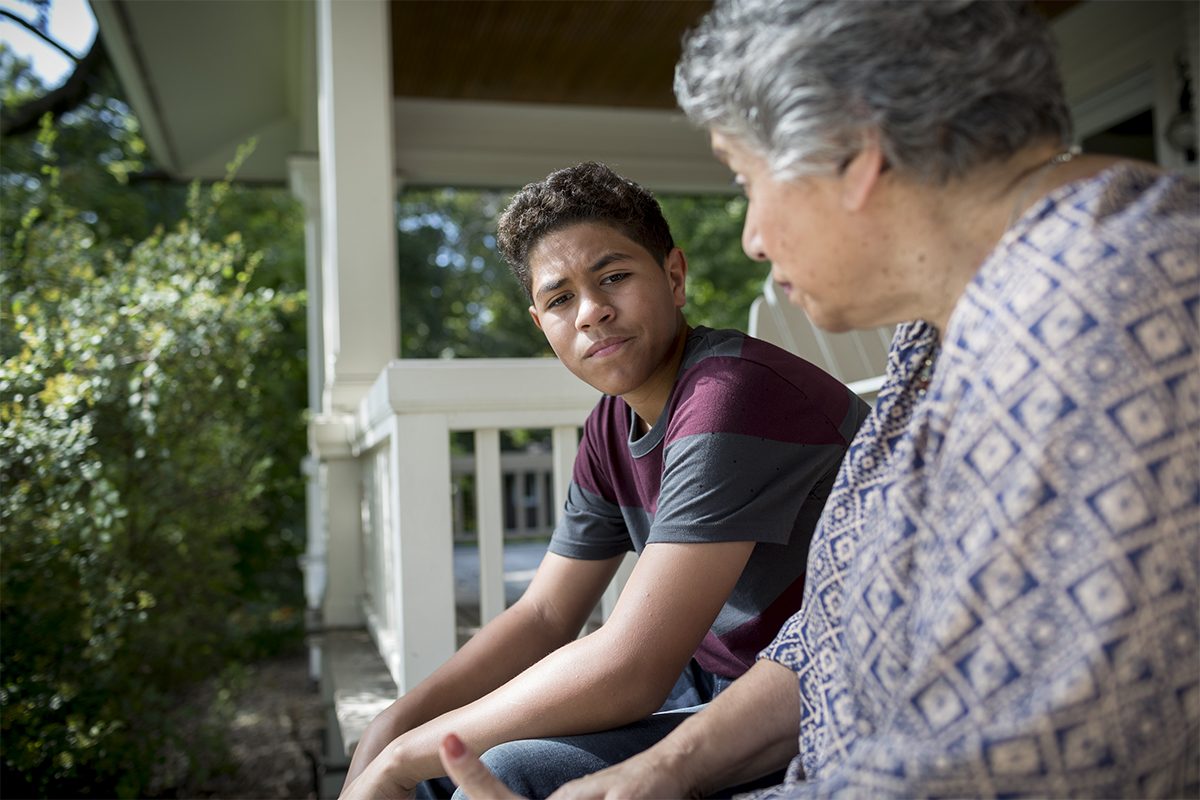Kids face all kinds of challenges. The right support can help them learn how to keep going when hard things happen. That’s what resiliency is all about.1
If you’re a parent, teacher or other trusted adult in a child’s life, you play a major part in supporting their resiliency.
In this overview, we’ll walk through what childhood resiliency is, why it matters and how you can help build it.
What is childhood resiliency?
Childhood resiliency is a kid’s ability to bounce back after hard things happen.
It’s what helps kids keep going after going through things like:
- Family stress
- Bullying
- Big life changes (like changing schools)
Why it matters
Think of a resilient child like a tree in a storm. A strong, resilient tree might bend, but it won’t break.
Resilient kids are the same. They might go through hard times and feel big emotions, but they still find a way to move on.
Building resilience in childhood can help set kids up for success as adults. It also supports better mental health.1
Optum Behavioral Care offers mental health and substance use services with more than 230 centers in 30 states and nationwide teletherapy services.Find care now
How to build resilience in kids
Kids aren’t born resilient. It’s something that grows over time.
As an adult in a child’s life, you play an important role in helping them grow strong. Here are some tips for building childhood resiliency:
1. Listen without judgment
Before you give information or advice, take a moment to listen. Don’t assume what your child knows or how they feel. Let them talk at their own pace. Try not to ask too many questions at once. It can feel like too much.
If they’re sad, scared or unsure about something, tell them it’s okay to feel that way. You don’t need to have all the answers. It’s OK to say, “I don’t know.”
If your child is having trouble talking about how they’re feeling, that’s OK, too. Young kids, in particular, might not be able to express themselves fully.2 Some kids may find it easier to draw, write or even doodle about how they feel. This might open the door to deeper talk later.
2. Be honest and open about your feelings
When you’re going through something hard, kids can sense it. Even if you don’t tell them about it.
For middle and high schoolers, hearing how you feel can be comforting. It reminds them that they’re not alone. You don’t have to share every detail, but letting them know you’re feeling sad, worried or stressed can show them it’s OK to have emotions. It also shows them it’s OK to talk about hard feelings instead of hiding them.3
Let them know what’s helping you cope, too. Whether it’s talking with a friend or going for walks outside.
3. Stick to a schedule
A regular schedule gives kids a sense of control when things are not clear.2
Try to:
- Keep wake-ups and bedtimes the same every day.
- Follow the school calendar, even when things are up in the air.
- Fit in healthy habits like getting fresh air and eating healthy meals.
This can help kids feel grounded and more in control. Knowing what’s coming next helps kids feel more secure. And gives them the strength to manage stressful times.2
4. Help kids learn to self-soothe
When life feels like a lot, you might go for a run, take a hot bath or meditate. Kids need ways to calm themselves, too.3
Some kids feel better when they draw or build things. Others might feel better when they cuddle with a stuffed animal or listen to music.
Every child is different. Support them as they try out different calming activities.
5. Know when to get help
Feeling sad, anxious or overwhelmed is part of being human — even for kids.
But if your child seems stuck in those feelings or is having a hard time with everyday life, it might be time to talk with a professional. Your family doctor or employee assistance program can connect you with a licensed therapist.
Bottom line
Learning to handle stress and tough emotions is a key life skill.
You can help your child build resiliency by showing them how to work through hard moments. But even the most resilient people have bad days.
Let your kid know their feelings are real and that talking about them is OK. Then, try to do something positive together, like reading a book or playing a game.




